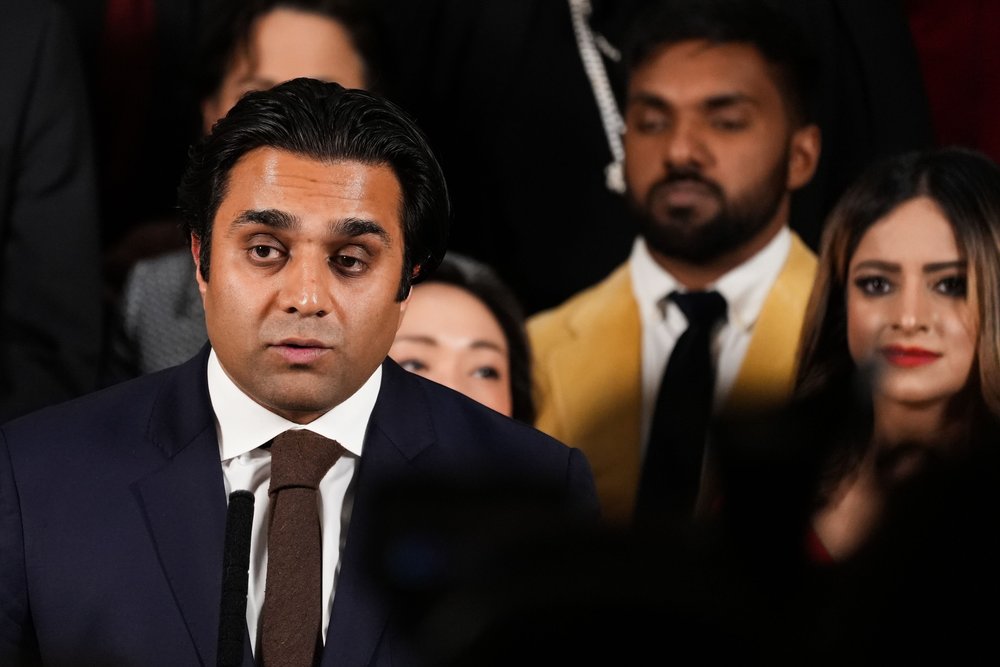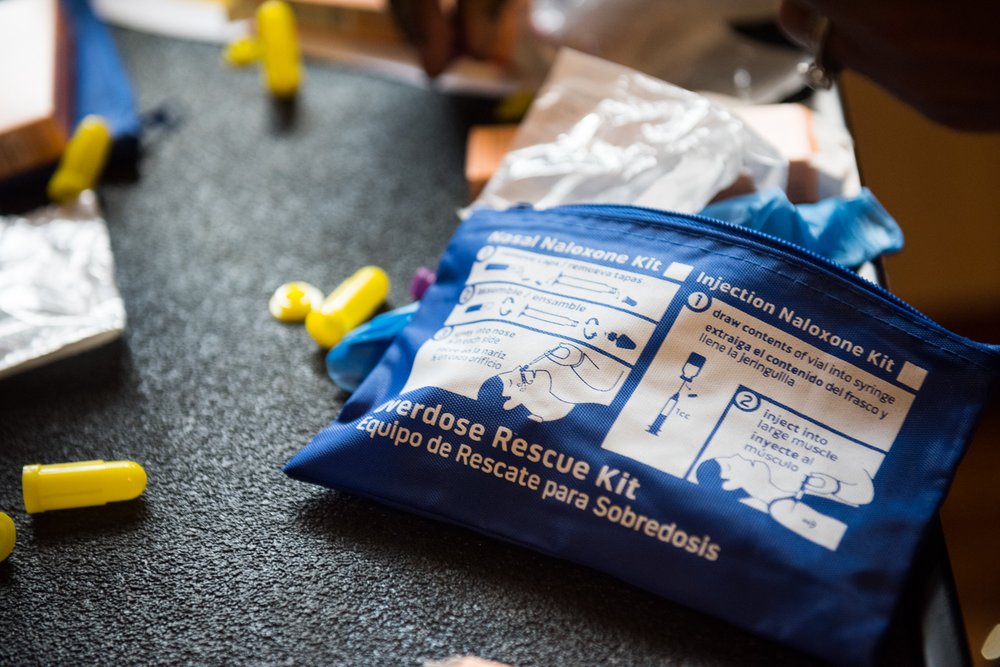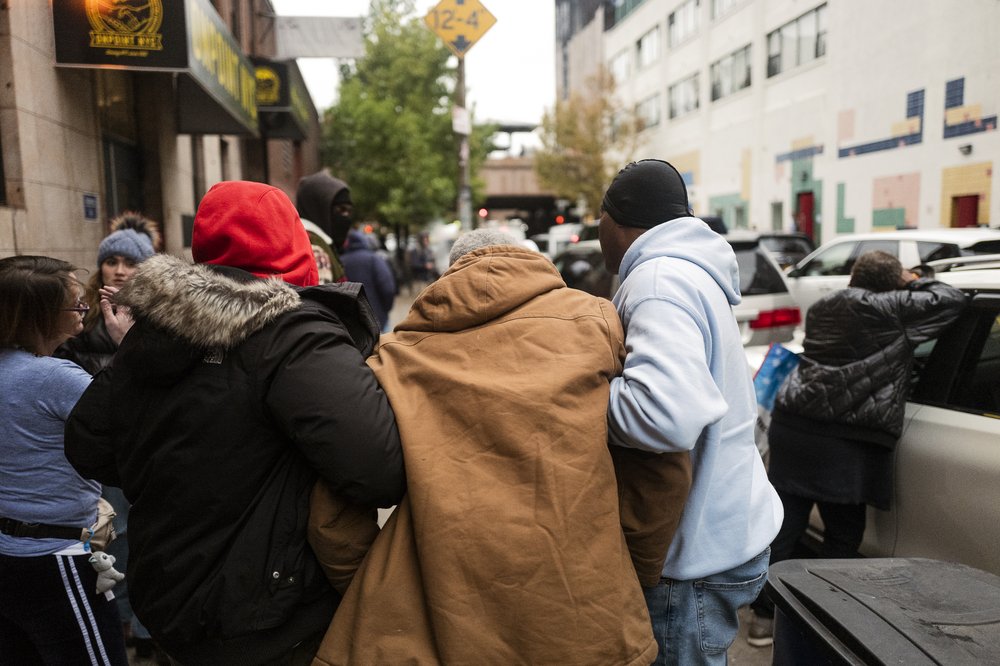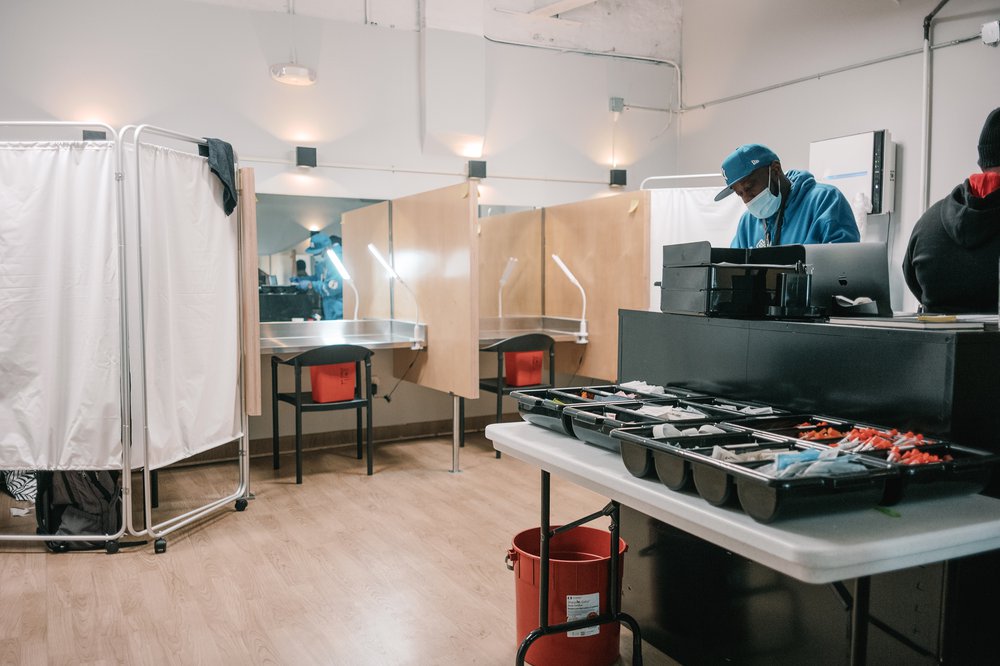Overdose prevention centers save lives but remain in legal limbo, as NYC moves toward expansion
March 4, 2023, 12:01 p.m.
The NYC health commissioner explains how City Hall plans to support supervised injection sites and other portions of a new initiative to reduce overdose deaths 15% by 2025.

On Thursday, Mayor Eric Adams announced an ambitious goal of reducing drug overdose deaths in New York City by 15% by 2025. It’s part of a broad plan the mayor laid out to improve mental health and addiction services across the five boroughs.
This “Care, Community, Action” initiative comes at a time when overdose death rates have reached record highs, quadrupling over the last decade due mostly to fentanyl, a, dangerous synthetic opioid. The mayor’s strategy will focus on expanding programs that are already working to reduce the harms of drug use in hard-hit communities, such as syringe exchange programs that provide clean needles and access to social services.
But few details have been released on funding and implementation of this massive project.
To find out more about exactly how the city will tackle the drug overdose crisis, NYC Health Commissioner Dr. Ashwin Vasan spoke with WNYC host Sean Carlson about the plan’s funding objectives.
They discussed how City Hall can support overdose prevention centers, which provide supervised injection of illicit substances along with a range of other services. Two of these facilities, the nation’s first, have saved hundreds of lives since opening in late 2021. But haggling at the federal level has left their legality in question, which is also limiting the funding local governments can provide.
“Currently, the city does not provide any money directly to oversight of safe injection services, and we've been lucky enough to find philanthropic partners to step in and fund those very discreet activities,” Vasan said.
The conversation’s transcript is available below. It’s been lightly edited for clarity and includes a question-and-answer about syringe exchanges not aired due to time constraints.
Sean Carlson: Before we get into the nuts and bolts of this initiative, can you just walk us through the basic components of the approach that the mayor laid out?
Dr. Ashwin Vasan: We're laying out a multilayered approach to a brand new mental health agenda to really meet this moment. We're coming out of the worst pandemic in public health crisis that we've seen in a century.
We're centering mental health in this era where we know that life expectancy has fallen in New York state faster than any other state in the country, and that mental health — either directly through something like overdoses, or indirectly through the connections between mental and physical health as well as violence — are major contributors to that drop in life expectancy.
So this is really a public health approach that focuses on where the urgency of need is greatest: the needs of our children, youth and families, the needs of people at risk of overdose and using substances and the needs of people living with serious mental illness.
The plan talks a lot about harm reduction. Can you tell us again what that means, for folks who aren't familiar with the term? And why it is such a central focus here?
Harm reduction is a principle that acknowledges that while we would love to live in a world where no one engages in unhealthy behaviors or dangerous behaviors, we also know that there are tools we can do to meet people where they are — even if they are engaged in those behaviors — to keep them safe.

In the case of overdoses, harm reduction means really understanding that people need time to overcome the powerful disease of addiction. In the meantime, the effect of opioids and our changing drug supply require that if people are going to use substances and engage in substance use, that there are ways for them to do so as safely as possible, because everyone deserves to live.
Let's talk about the finances a bit here. The city currently has $150 million from recent legal settlements with opioid manufacturers to dedicate to this.
Can you talk about how much of that money will go towards this plan and where the other funding is going to come from?
So this plan commits $20 million in new resources, on top of over $370 million in investments into this plan already committed by the Adams administration.
You asked specifically about the opioid settlement dollars? We've already committed $150 million of opioid settlement funds to activities in this plan, ranging from harm reduction, overdose prevention to care and treatment and support in order to meet that target of reducing overdose deaths by 15%.
The plan sets a target of opening five overdose prevention centers by 2025. Now, the city currently has two of those centers where people can use illegal drugs under staff supervision.
These sites opened not without some controversies, so can you talk about how successful they've been and why we need more?
Overdose prevention centers are absolutely lifesaving. In the year that they've been in operation, over 700 potentially fatal overdoses that would've happened in the street or in a subway, or on a school playground or in the shadows somewhere — those happened in an environment where someone who is trained, who has clinical skills, who knows how to take care of people could intervene to save a life.

When we think about bending that curve to reduce overdose deaths by 15% by 2025, we need more of those overdose prevention centers, because they're proven. This is a model that has existed worldwide for decades. But we opened the first two in the country at the end of 2021, and their effect has been transformative.
Ideally, where would you put these next centers? What neighborhoods are we talking about?
Like any good public health strategy, we go where the data tells us to go, and that's where the need is the greatest. We are focused on the neighborhoods which have currently the highest rates of fatal overdoses, and non-fatal overdoses as well.
Upper Manhattan is where we launched the first two overdose prevention centers, because the need is the greatest there. The South Bronx is another community with extraordinary need. And so when we talk about expanding overdose prevention centers, those are among the areas.
Now, the state has been hesitant to support these centers given questions about their legality at the federal level. But it is my understanding that there's still no public funding dedicated toward overdose prevention centers, and the mayor's plan alludes to some legal issues.
Can you be specific about what legal barriers stand in the way of the city funding those overdose prevention centers?
Currently, the city does not provide any money directly to oversight of safe injection services, and we've been lucky enough to find philanthropic partners to step in and fund those very discreet activities.
But the city has been funding a whole host of the wraparound services that are critical for an OPC [overdose prevention center] to function. So an OPC doesn't work unless it has all those critical support services around it.

Of course, we're in ongoing dialogue with both the state and the federal authorities for the kind of guidance that we need and direction we need in order to operate these sites with public dollars. But currently no public dollars go to supervised injection.
One of the goals here is to expand the reach of syringe service providers. They're generally run by community-based organizations.
How much new funding are these programs gonna get?
Well, a lot of the money that we are talking about with settlement dollars, but otherwise, we've been funding these sites for decades. There are 14 syringe service providers that do a whole range of harm-reduction activities, like providing safe needles, providing safe spaces — but also a whole host of wraparound supports like mental healthcare, physical healthcare, basic needs like food and clothing and laundry, and connection to social services.
These are all activities that the city is focused on supporting, already has been supporting for years, and the settlement dollars are helping us do that more broadly, more intensively, and across the 14 sites in our city.
NY doubles weed licenses for social equity candidates, while general retailers continue to wait Got long COVID? Here’s what NYC’s private health care can offer.